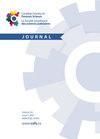Validity of Willems age estimation method in children’s & adolescents’ of Dakshina Kannada Region, India
IF 0.5
Q4 MEDICINE, LEGAL
Canadian Society of Forensic Science Journal
Pub Date : 2021-01-02
DOI:10.1080/00085030.2020.1858588
引用次数: 0
Abstract
Abstract Willems gender-specific and non-specific maturity scores derive the age of the individual with acceptable error margins in the Belgian Population. This needs to be validated in various subpopulations to enable its use in age estimation. Our aim was to test the validity of both Willems’s I & II maturity scores to estimate dental age in children and adolescents (aged 5–20 yrs) in Dakshina Kannada population in India. Seven teeth of mandibular left quadrant from 800 Orthopantomograms (Male:Female::372:428) of individuals aged 5–20 years were staged using Demirjian’s method and substituted by the Willems maturity scores to derive the age. The chronological and the predicted age of the individuals were correlated to derive the mean absolute error of age estimation in male, female and total. The mean absolute error of estimation of age in males, females, and total of Willems I and II techniques were 1.11, 1.04, 1.07, 1.15, 1.04 and 1.09 years respectively. The gender nonspecific scores predominantly underestimated the age. The Willems I technique showed an underestimation of age in females and over-estimation of age in males (p < 0.001). The present study validates Willems method of age estimation in Dakshina Kannada population, showing a low error rate of ∼1 year.Willems年龄估计方法在印度达克什那邦邦儿童和青少年中的有效性
摘要Willems性别特异性和非特异性成熟度评分得出了比利时人群中具有可接受误差范围的个体的年龄。这需要在不同的亚群中进行验证,以使其能够用于年龄估计。我们的目的是测试Willems I和II成熟度评分的有效性,以估计印度Dakshina Kannada人口中儿童和青少年(5-20岁)的牙科年龄。800个5-20岁个体的正颌图(男:女:372:428)中下颌左象限的7颗牙齿 使用Demirjian的方法对年进行分期,并用Willems成熟度分数代替,得出年龄。将个体的时间和预测年龄相关,得出男性、女性和总年龄估计的平均绝对误差。Willems I和II技术中男性、女性和总年龄估计的平均绝对误差分别为1.11、1.04、1.07、1.15、1.04和1.09 年。性别特异性评分主要低估了年龄。Willems I技术显示女性低估了年龄,男性高估了年龄(p < 0.001)。本研究验证了在Dakshina-Kannada人群中进行年龄估计的Willems方法,显示出~1的低错误率 年
本文章由计算机程序翻译,如有差异,请以英文原文为准。
求助全文
约1分钟内获得全文
求助全文

 求助内容:
求助内容: 应助结果提醒方式:
应助结果提醒方式:


